Recent Mold Remediation Posts
Providing Safe and Effective Mold Removal for Yuma Businesses
7/16/2024 (Permalink)
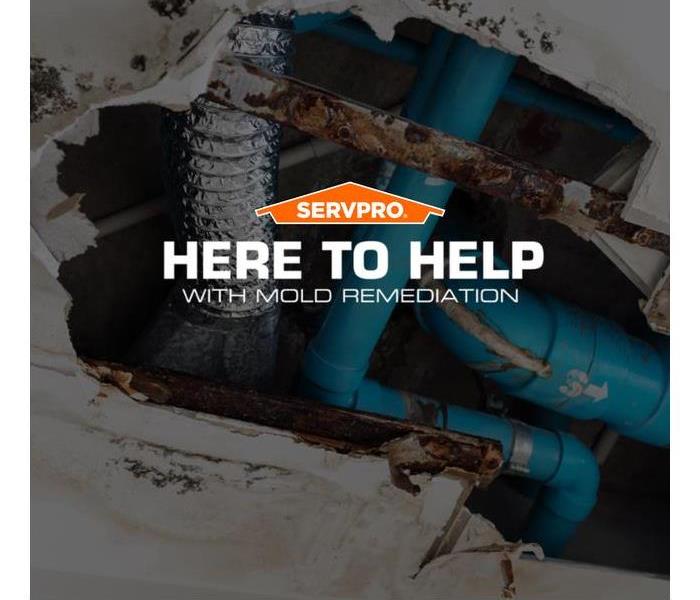 Team SERVPRO has the certification, experience, and the tools to tackle any mold damage situation in your business or home. Contact us day or night.
Team SERVPRO has the certification, experience, and the tools to tackle any mold damage situation in your business or home. Contact us day or night.
Reliable Yuma Mold cleanup with SERVPRO®
Yuma has diverse attractions. The city's rich history is preserved in museums, including The Sanguinetti House Museum and Gardens and Yuma Territorial Prison State Historic Park. The Department of Parks and Recreation in Yuma maintains several parks, providing sufficient green spaces for residents and visitors to relish. A favorite for many is the West Wetlands Park, which features a lake, a butterfly garden, and multiple playgrounds. Yuma hosts annual events, including the Yuma County Fair, which is held every April. This event features livestock shows and live entertainment.
You should promptly address mold removal on Yuma commercial premises because a minor problem can become a major infestation. Mold infestation can result from minor water damage cases, such as slow leaks. By contacting SERVPRO, you can commence the cleanup process immediately. Our quick response helps cut costly repairs and minimize downtime for your business. Our technicians have the expertise and training to handle all microbial infestations safely. The restoration team we dispatch to your premise understands the risks associated with mold infestation and cleanup, the affected contents, and the most appropriate removal strategies, ensuring a safe and healthy business environment.
Materials affected by mold within a business
- Furniture
- Building materials
- Documents
- Equipment and electronics
Microbial growth can impact electronic devices in your business, including computers, leading to corrosion and malfunction. Important office documents and files can also become damaged, resulting in the loss of valuable information.
SERVPRO's Approach to Mold Remediation
SERVPRO crews inspect the premises, checking for signs like warped paint, discoloration, and possible hidden mold colonies. We detect moisture in various structural materials using moisture meters and infrared cameras. We also assess the types of materials infested to determine their cleanability.
Additional practices for sufficient mold remediation
- Building containment
- Removing mold-infested materials
- Dehumidification
- Cleaning and sanitizing
We emphasize moisture control to avert future growth, as mold often results from water damage. Using air movers and dehumidifiers, we dry affected areas thoroughly. Our crews set up containment barriers and use air filtration devices with HEPA filters to create negative air pressure within the chambers to prevent cross-contamination while cleaning.
By partnering with SERVPRO of Yuma East, Foothills businesses can ensure a safe and effective mold removal service. Call us at (928) 247-1180. Faster to any size disaster™.
Yuma's Unique Mold Damage Challenges and Solutions
5/19/2024 (Permalink)
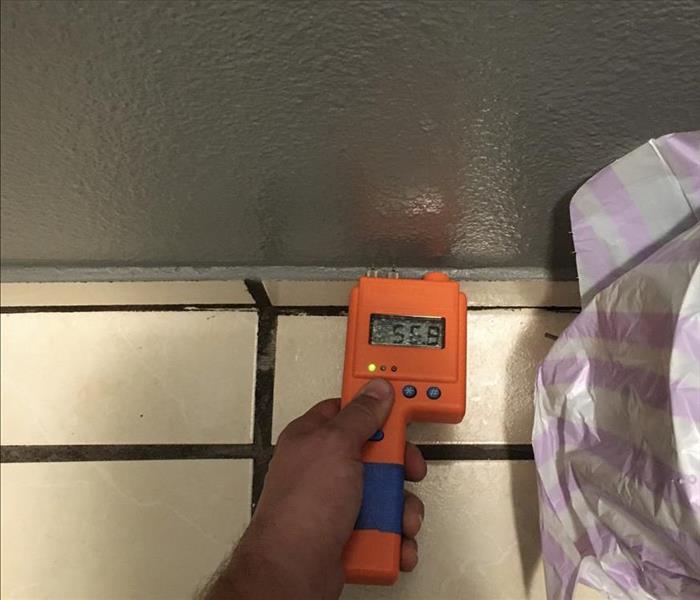 Heavy rains in an arid Yuma can lead to moisture that encourages mold growth. SERVPRO can remediate the mold damage, "Like it never even happened."
Heavy rains in an arid Yuma can lead to moisture that encourages mold growth. SERVPRO can remediate the mold damage, "Like it never even happened."
Understanding Mold Issues in Yuma's Arid Environment
Mold infestations in this part of Arizona typically happen under unique circumstances due to the city's notably dry and hot climate, which is perfect for crops such as Martha's Gardens Medjool Date Farm. While mold problems are less frequent here than in humid regions, Yuma's specific environmental conditions can still foster mold growth in unexpected ways, particularly in areas of homes that are not regularly inspected, such as attics and crawl spaces.
Common Causes of Mold in Yuma
Mold damage development in Yuma can often be attributed to a few distinct scenarios:
- Intense Seasonal Rainfall: Despite its arid climate, Yuma experiences short periods of heavy rainfall, especially during the monsoon season from July through August. This weather can cause water damage, particularly in homes with poorly maintained roofs.
- Inadequate Ventilation: Homes in Yuma are often tightly sealed to keep the cool air in, especially during the scorching summer months. This closure can lead to poor air circulation in secluded spaces, preventing moisture from evaporating effectively.
- Air Conditioning Condensation: Air conditioners operate nearly year-round to combat the Arizona heat, so issues with condensation drain lines, either from clogs or leaks, are common and can cause moisture accumulation conducive to mold growth.
Specific Mold Challenges in Yuma
Mold issues in Yuma present unique challenges that require careful attention. Due to the area's dry conditions, homeowners may not immediately suspect the presence of mold. It is often only detected after visible growth or a musty smell emerges, indicating that the mold may have already spread significantly.
How SERVPRO® Addresses Mold Damage in Yuma
SERVPRO tackles mold in Yuma homes with advanced techniques and professional equipment designed for efficient and thorough remediation:
- Moisture Identification and Remediation: SERVPRO professionals can quickly locate the source of water damage and the extent of moisture penetration using hygrometers and moisture detectors.
- High-Efficiency Dehumidifiers and Air Movers: These tools are crucial for removing lingering moisture from air and materials.
- HEPA Vacuums and Air Scrubbers: These devices help capture microscopic mold spores, ensuring thorough cleaning.
SERVPRO of Yuma East, Foothills, at (928) 247-1180 to get fast help with mold damage remediation for your home and contents. Our team of experts is always Here to Help®.
How Come the Mold Returned?
4/3/2023 (Permalink)
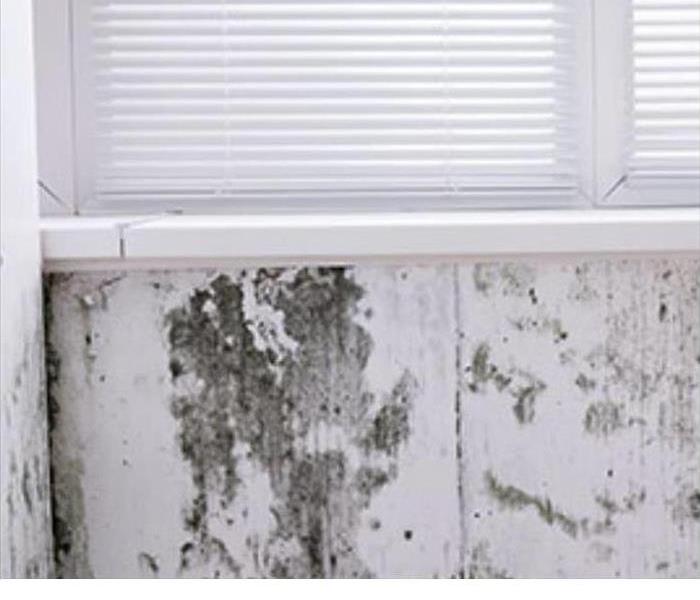 Our technicians are experienced in mold remediation.
Our technicians are experienced in mold remediation.
Fix the Moisture Source to Prevent Mold from Returning
Many homeowners say they removed the Mold from their bathroom walls, but it returned several days later. They ask why? Our response is based on the science of drying and years of experience working in damp structures to perform mold remediation. Here’s our answer, “Mold requires moisture to grow. There are always mold spores in the air, both outdoors and within our indoor environments. When a surface becomes damp and when the relative humidity of the indoor air reaches 60% or higher, Mold will grow.”
Why Does Mold Return to the Same Location?
This is another common question, and there is a logical reason why Mold first grew in a particular location and why it returns to that location even after being removed. It’s because the conditions were ideal for mold growth in the first place. The air movement in the room carried mold spores to a specific location where the texture, temperature, and moisture conditions were perfect for a mold colony to develop; these locations are often found on outside-facing walls and usually above or below windows. Bathrooms and kitchens produce steam and are the standard rooms where Mold can become problematic.
It’s easy to remove mold patches, but new airborne mold spores will settle in the exact locations if the moisture conditions are not corrected. There are ways to prevent this cycle from repeating:
- Ventilate kitchens, bathrooms, and bedrooms so moisture don’t exceed 60% RH.
- Use dehumidifiers and HVAC systems as necessary
- Install and use powerful exhaust fans in kitchens and bathrooms
- Be sure that exterior walls are properly insulated
- Inspect for external leaks, including pipe leaks that could dampen a wall
- Maintain indoor temperature so condensation doesn’t collect on exterior walls
SERVPRO of Yuma East, Foothills has observed that a lack of ventilation causes most interior Mold. That means opening doors and windows to ventilate and operating exhaust fans in damp rooms to prevent mold growth. Anytime you need advice about a mold problem or require mold remediation, we are here to help. Our experienced team can be reached at 928-247-1180
Why Did the Mold Return?
4/3/2023 (Permalink)
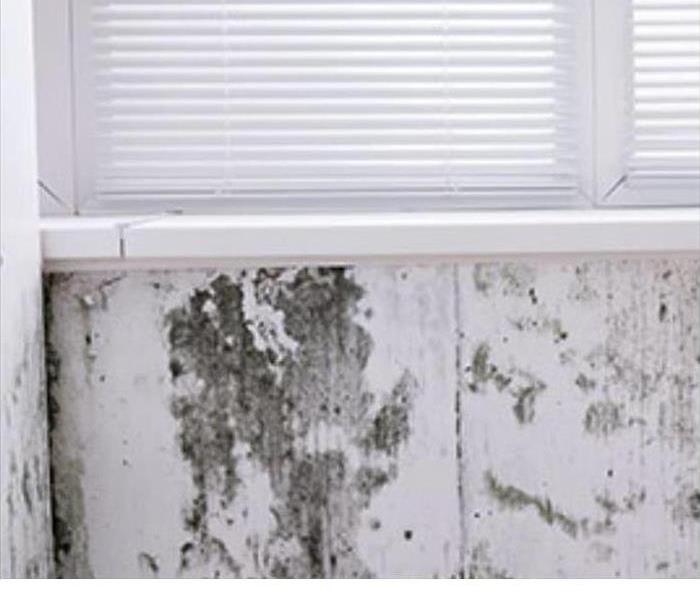 Mold grows where the conditions are ideal. Wall sections near windows are typical locations to find mold colonies.
Mold grows where the conditions are ideal. Wall sections near windows are typical locations to find mold colonies.
Fix the Moisture Source to Prevent Mold from Returning
Many homeowners say they removed the Mold from their bathroom walls, but it returned several days later. They ask why? Our response is based on the science of drying and years of experience working in damp structures to perform mold remediation. Here’s our answer, “Mold requires moisture to grow. There are always mold spores in the air outdoors and in our indoor environments. When a surface becomes damp and when the relative humidity of the indoor air reaches 60% or higher, Mold will grow.”
Why Does Mold Return to the Same Location?
This is another common question, and there is a logical reason why Mold first grew in a specific location and why it returns to that location even after being removed. It’s because the conditions were ideal for mold growth in the first place. The air movement in the room carried mold spores to a specific location where the texture, temperature, and moisture conditions were perfect for a mold colony to develop; these locations are often found on outside-facing walls and usually above or below windows. Bathrooms and kitchens produce steam and are the standard rooms in which Mold can become a problem.
It’s easy to remove mold patches, but new airborne mold spores will settle in the exact locations if the moisture conditions are not corrected. There are ways to prevent this cycle from repeating:
- Ventilate kitchens, bathrooms, and bedrooms so moisture don’t exceed 60% RH.
- Use dehumidifiers and HVAC systems as necessary
- Install and use powerful exhaust fans in kitchens and bathrooms
- Be sure that exterior walls are properly insulated
- Inspect for external leaks, including pipe leaks that could dampen a wall
- Maintain indoor temperature so condensation doesn’t collect on exterior walls
SERVPRO of Yuma East, Foothills has observed that most interior Mold is caused by lack of ventilation. That means opening doors and windows to ventilate and operating exhaust fans in damp rooms to prevent mold growth. Anytime you need advice about a mold problem or require mold remediation, we are here to help. Our experienced team can be reached at 928-247-1180
Is Mold a Problem in the Yuma Area?
12/8/2022 (Permalink)
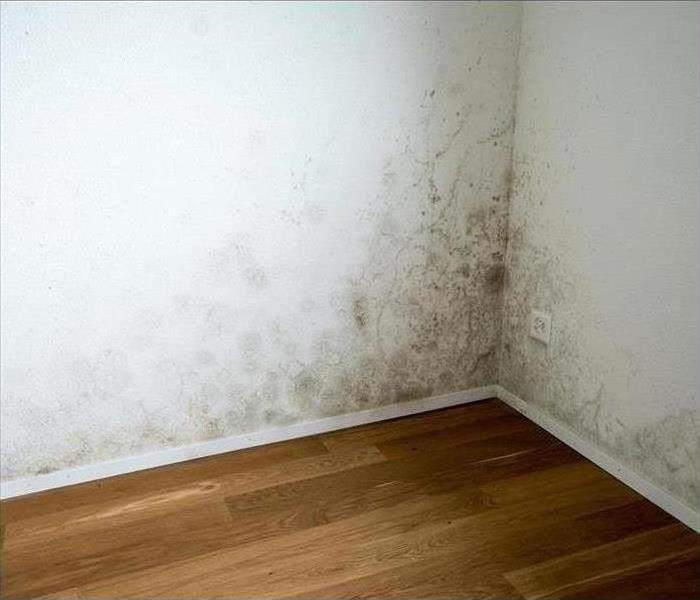 No matter the type of mold growing indoors it needs to be removed appropriately.
No matter the type of mold growing indoors it needs to be removed appropriately.
How Can Buildings in a Desert Climate Have a Mold Problem?
In the center of the desert, only a short distance from the Mexican Border, temperatures can get extremely high. One would think it’s too dry to have mold problems. Mold problems happen in our homes and commercial structures, and when they do, the problem will often spread quickly.
While many molds have adapted to low humidity and the elevated heat of the desert, these are not usually the molds that typically cause problems for building interiors or are problematic to people. While average outdoor humidity in the Yuma area is around 40% there are three months of the year when our desert has elevated humidity and is more supportive of all kinds of mold growth. For your information, molds that can cause health effects for people require relative humidity above 60%.
The so-called black mold, Stachybotrys, and others are the types of mold that can pose a threat to humans because they produce fine airborne spores that can quickly enter our respiratory system. These molds find enough locations in the desert with adequate moisture to support their growth and survival year around, and they benefit from the Monsoon rain season. Trust us when we say, “airborne mold spores will find their way into wet or damp indoor environments.” Since these molds prefer 60% relative humidity (and above) and temperatures in the 70F to 85F range, they will thrive in a damp indoor environment. Remember, most indoor environments are air-conditioned to this temperature range. Once an indoor environment is wet by a plumbing mishap or groundwater flooding, the interior humidity will quickly elevate to 60% RH and above. Unless HEPA filtration, the HVAC system will move spores throughout the ventilation system. Even if an HVAC system has advanced filtration to capture mold spores the system will blow and move the air in rooms, and that can spread the spores around, causing some of them to settle on wet portions of walls and other surfaces such as paper, cardboard, leather, and certain fabrics such as cotton. These surfaces named, are considered food sources for mold colonies.
Ideal Food Sources for Mold:
Paper
Cardboard
Softwood
Decaying food
Leather
Cotton fabric
As we have explained, mold can indeed become a problem in desert community homes and buildings just like it can become a problem in a temperate or tropical climate. The reason, no matter where we live, our homes and their interior atmosphere are similar, and plumbing leaks, water flooding, and other issues can quickly raise indoor humidity to a level where mold can grow and spread spores.
If you suspect your home or building has a mold problem, please call SERVPRO of Yuma. We are always happy to talk with you and/or make a site visit. If remediation services are required, we may introduce you to an Industrial Hygienist (third party) who can provide a written scope about the remedy. SERVPRO understands how to safely remove mold by following EPA and OSHA guidelines.
Our business phone: 928-247-1180.
Get Your Copy of the EPA Booklet About Mold.
12/8/2022 (Permalink)
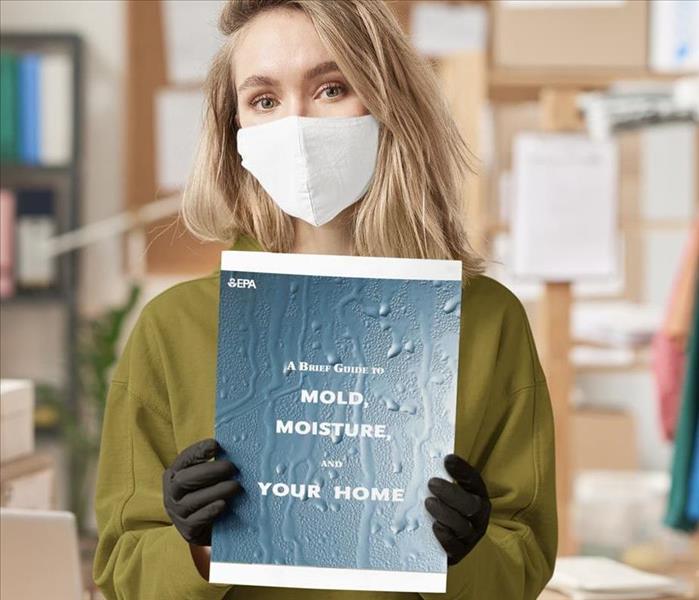 The EPA Mold Booklet is free. Be sure to download a copy of it.
The EPA Mold Booklet is free. Be sure to download a copy of it.
Mold, Moisture, and Your Home
The EPA has published a helpful mold guide for homeowners to understand why mold might grow in their homes and how to remove it. The booklet, Mold Moisture and Your Home is available as a PDF download from the EPA.
In this article, we have quoted several vital areas of information from the EPA mold guide to provide you with a quick review of the information. However, we recommend that you download and read the entire booklet!
- “Molds are usually not a problem indoors unless mold spores land on a wet or damp spot and begin growing.”
- “The mold spores will not grow if moisture is not present. Indoor mold growth can and should be prevented or controlled by controlling moisture indoors. If mold grows in your home, you must clean up the mold and fix the water problem.”
- “Who should do the cleanup depends on several factors… one consideration is the size of the mold problem? If the moldy area is less than about 10 square feet (less than roughly a 3 ft. by 3 ft. patch), in most cases, you can handle the job yourself, following the guidelines below.”
The EPA booklet warns homeowners against self-do-it-cleaning if the mold source was contaminated with sewage, if they suspect the HVAC system is contaminated, and if there is a quantity of mold of more than 10 square feet. The booklet then provides two pages of instructions about how to safely and properly clean moldy surfaces. The instruction discusses how to safely use bleach (if and when it may be needed).
- Avoid breathing in mold or mold spores. To limit your exposure to airborne mold, you may want to wear an N-95 respirator, available at many hardware stores and from companies that advertise on the Internet.
- Wear gloves. Long gloves that extend to the middle of the forearm are recommended. Ordinary household rubber gloves may be used when working with water and mild detergent. If you use a disinfectant, a biocide such as chlorine bleach, or a robust cleaning solution, you should select gloves made from natural rubber, neoprene, nitrile, polyurethane, or PVC.
- Wear goggles. Goggles that do not have ventilation holes are recommended. Avoid getting mold or mold spores in your eyes.
- Cleanup and Biocides. Biocides are substances that can destroy living organisms. Using a chemical or biocide that kills organisms such as mold (chlorine bleach, for example) is not recommended as a routine practice during mold cleanup. There may be instances, however, when professional judgment may indicate its use.
The EPA booklet asks an important question, how do I get rid of mold? Here is their answer:
- "It is impossible to get rid of all mold and mold spores indoors; some mold spores will be found floating through the air and in house dust. The mold spores will not grow if moisture is not present. Indoor mold growth can and should be prevented or controlled by controlling moisture indoors. If mold grows in your home, you must clean up the mold and fix the water problem. If you clean up the mold but don’t fix the water problem, then, most likely, the mold problem will come back."
We can’t say it enough about, Mold, Moisture, and Your Home. It is an outstanding resource. We strongly encourage you to get a personal copy.
Please, understand SERVPRO of Yuma is an expert in resolving moisture and mold issues in homes and public buildings.
We can be contacted at 928-247-1180
How Many Types of Mold Are Out There?
12/8/2022 (Permalink)
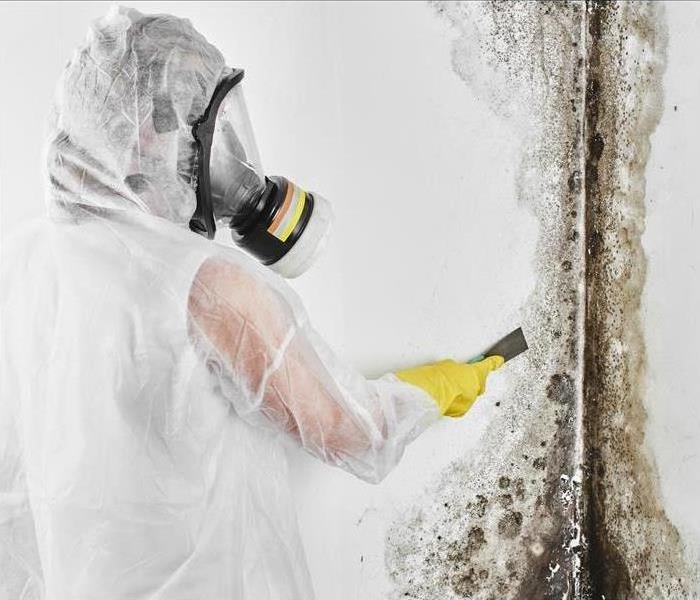 SERVPRO mold remediation workers are dressed in TYVEK to protect from repeated mold exposure.
SERVPRO mold remediation workers are dressed in TYVEK to protect from repeated mold exposure.
Mold is Part of the Fungi Kingdom
Mold is part of the fungi kingdom. Many people equate fungi to mushrooms. However, the fungi kingdom is more expansive than that. Fungi have a different cell structure than plants or animals. Fungi typically reproduce through tiny spores, microscopic cells that can survive through harsh conditions and sometimes replicate to produce more genetic copies. This ability to quickly reproduce and survive extreme conditions is why mold is so hard to eliminate! Mold comes in more than 100,000 species. Specific molds can survive in every climate, and molds are found everywhere on our planet, from rainforests to deserts and beyond.
If You See Mold, Don’t Panic!
There are stories told about “black mold”, these people are talking about a specific mold named Stachybotrys Chartarum. However, just because a mold is black doesn’t mean that it’s Stachybotrys Chartarum. There are one hundred thousand different kinds of mold that come in all colors, even pink, yellow, and blue! Don’t automatically assume your home has Stachybotrys Chartarum.
However, if there is visible mold in your home (no matter the species) you will want to remove it or have professionals such as SERVPRO of Yuma assist you with the remediation (safe removal).
Once visible mold has been remediated, the problem is not always solved. Unless the cause of mold growth is addressed, the mold will probably return in time. And the cause of mold growth is triggered by dampness and elevated humidity. These issues can be fixed. Often, it’s a matter of employing proper insulation, heating, or ventilation. SERVPRO of Yuma and East Foothills understands how and why mold grows. We can provide a total remediation service:
- Address the cause/source
- Remove the mold
We perform inspections and provide quotes for the appropriate services. If you are concerned about or suspect your home has mold issues please, contact us at 928-247-1180
Mold in the Desert?
11/9/2022 (Permalink)
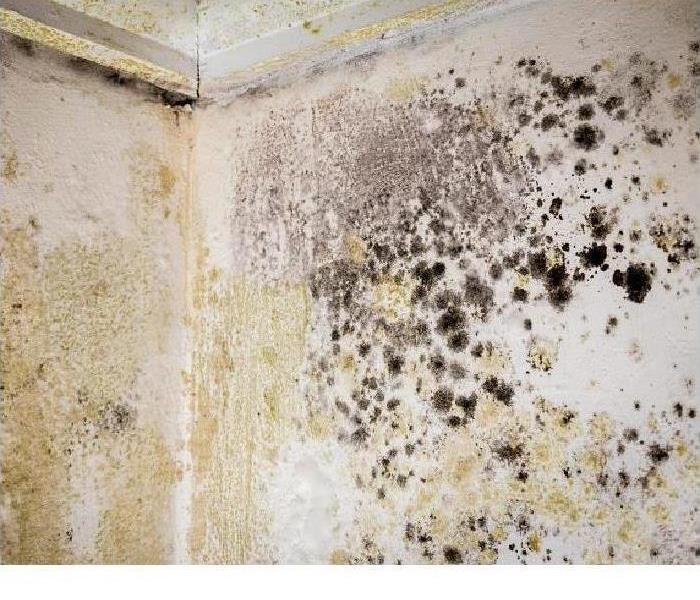 Black mold on walls in an indoor setting should be removed.
Black mold on walls in an indoor setting should be removed.
Buildings in a Desert Climate Can Have a Mold Problem Too!
In the center of the desert, only a short distance from the Mexican Border the temperatures can get extremely high. One would think it’s too dry to have mold problems. Mold problems happen in our homes and commercial structures, and when they do, the problem will often spread quickly.
While many molds have adapted to low humidity and the elevated heat of the desert, these are not usually the molds that typically cause problems for building interiors or are problematic to people. While average outdoor humidity in the Yuma area is around 40% there are three months of the year when our desert has elevated humidity and is more supportive of all kinds of mold growth. For your information, molds that can cause health effects for people require relative humidity above 60%.
The so-called black mold, Stachybotrys, and others can threaten humans because they produce fine airborne spores that can quickly enter our respiratory system. These molds find enough locations in the desert with adequate moisture to support their growth and survival year-round and benefit from the Monsoon rain season. Trust us when we say, “airborne mold spores will find their way into wet or damp indoor environments.” Since these molds prefer 60% relative humidity (and above) and temperatures in the 70F to 85F range they will thrive in a damp indoor environment. Remember, most indoor environments are air-conditioned to this temperature range. Once an indoor environment is wet by a plumbing mishap or groundwater flooding, the interior humidity will quickly elevate to 60% RH and above. Unless HEPA filtration, the HVAC system will move spores throughout the ventilation system. Even if an HVAC system has advanced filtration to capture mold spores the system will blow and move the air in rooms and that can spread the spores around causing some of them to settle on wet portions of walls and other surfaces such as paper, cardboard, leather, and certain fabrics such as cotton. These surfaces named, are considered food sources for mold colonies.
Ideal Food Sources for Mold:
Paper
Cardboard
Softwood
Decaying food
Leather
Cotton fabric
As we have explained, mold can indeed become a problem in desert community homes and buildings just like it can become a problem in a temperate or tropical climate. The reason, no matter where we live, our homes and their interior atmosphere are similar and plumbing leaks, water flooding, and other issues can quickly raise indoor humidity to a level where mold can grow and spread spores.
If you suspect your home or building has a mold problem, please call SERVPRO of El Centro and Salton City. We are always happy to talk with you and/or make a site visit. If remediation services are required, we may introduce you to an Industrial Hygienist (third party) who can provide a written scope about the remedy. SERVPRO understands how to safely remove mold by following EPA and OSHA guidelines.
 Team SERVPRO has the certification, experience, and the tools to tackle any mold damage situation in your business or home. Contact us day or night.
Team SERVPRO has the certification, experience, and the tools to tackle any mold damage situation in your business or home. Contact us day or night.

 24/7 Emergency Service
24/7 Emergency Service






